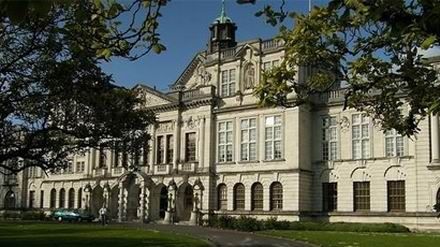2016年1月23日的托福考试大家都准备的怎么样了,留学群托福考试栏目为了让广大考生更好地规划复习、应对即将到来的考试,特地整理了以下2016年1月23日托福听力真题预测,提前祝大家考试成功!
2016年1月23日托福听力真题预测:
Conversation 1
Narrator
Listen to a conversation between a student and a registrar.
Stu: Hi, I’d like to drop off my graduation form; I understand you need this in order to process my diploma.
Pro: Ok, I will take that. Before you leave, let's me check our computer. Looks like you are OK for graduation, and actually, I am getting a warning flag on your academic record here.
Stu: Really?
Pro: Yeah. Let's see what’s what. Ok, are you familiar with our graduation requirements?
Stu: Uh, I think so
Pro: Well, then you know you need 48 credits in your major field to graduate and at least 24 credits at the intermediate level or higher. Also, after your second year, you have to meet with your department chair to outline a plan for the rest of your time here. In the past, we also issued letters before students’ final year began to let them know what they needed to take in the final year to be OK, but we don't do that anymore.
Stu: I definitely met with my chair person 2 years ago. He told me that I needed 8 more courses at the intermediate level or higher in the last 2 years to be OK. So I am not sure what the problem is, I make sure I got those credits.
Lecture 1 Animal Behavior
Pro: OK. Well, last time we talked about passive habitat selection, like plants for example, they don't make active choices about where to grow. They are dispersed by some other agent, like the wind. And if the seeds land in a suitable habitat, they do well and reproduce.
With active habitat selection, an organism is able to physically select where to live and breed. And because an animal’s breeding habitat is so important, we’d expect animal species to have developed preferences for particular types of habitats, places where their offspring have the best chance of survival. So let's look at the effect this preference can have by looking at some examples.
But first let’s recap. What do we mean by habitat? Frank?
Stu: Well, it’s basically the place or environment where an organism normally lives and grows.
Pro: Right, and as we’v discussed, there are some key elements that a habitat must contain, food obviously, water, it’s gotta have the right climate and spaces for physical protection. And we saw how important habitat selection is when we look at habitats where some of these factors are removed, perhaps through habitat destruction. I just read about a shorebird, the plover.
Conversation 2
Pro: So, Richard... what’s up?
Stu:Well, I know we have a test coming up on chapters.
Pro: Chapters 3 and 4 from your textbook.
Stu: Right, 3 and 4, well, I didn’t get something you said in class Monday.
Pro: Alright. Do you remember what it was about?
Stu: Yeah, you were talking about a gym... a health club where people can go to exercise, that kind of thing.
Pro: Ok, but the health-club model is actually from chapter 5.so…
Stu: Oh, chapter 5? Oh so it’s not... OK but I guess I still want to try to understand…
Pro: Of course, well, I was talking about an issue in strategic marketing, the healthy club model; I mean with a health club you might think they would have trouble attracting customers right?



 湘公网安备 43011102001150号
湘公网安备 43011102001150号

